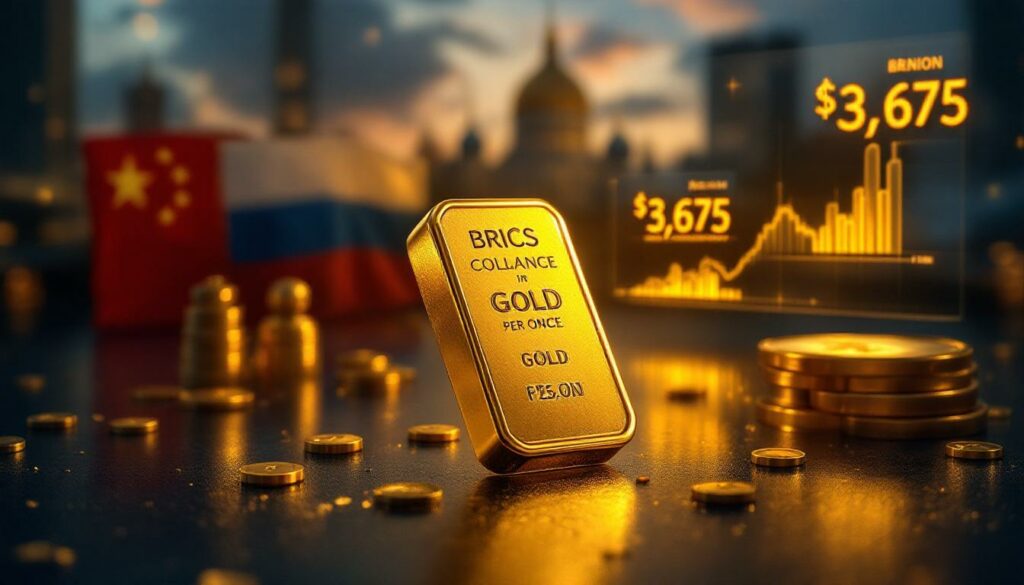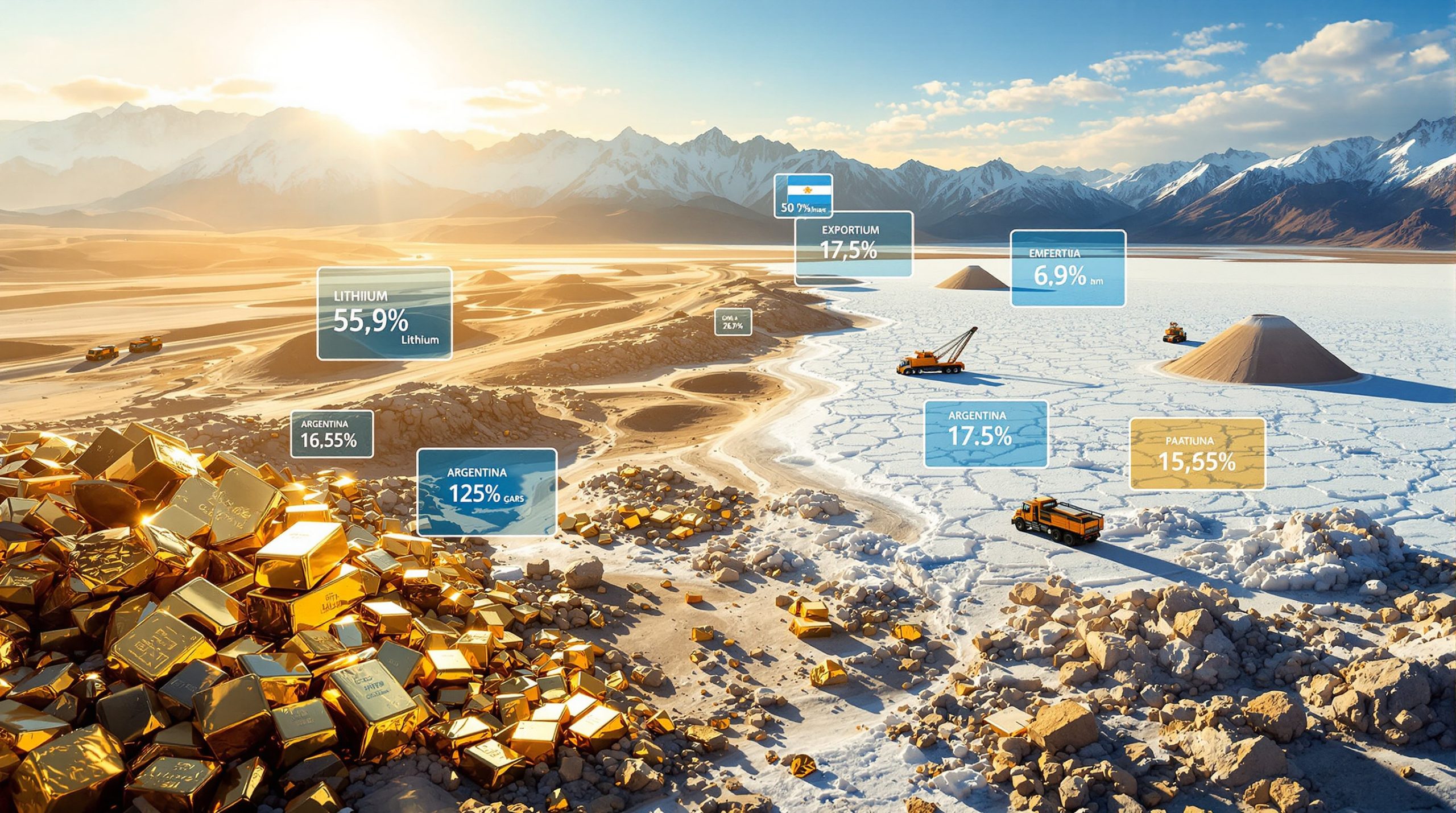How Is Russia Reshaping the Global Gold Market?
Russia, the world's second-largest gold producer, is fundamentally transforming how it manages its precious metals sector, with far-reaching implications for global markets. These changes represent a significant shift in how gold is traded, priced, and utilized in international finance.
Russia's Strategic Gold Position
Russia produces approximately 300 tons of gold annually, making it second only to China in global production. Despite this substantial output, Russia exports only 2.37% of global gold exports, keeping most production within its borders for strategic purposes.
The country's approach to gold has evolved dramatically since 2022, with several key developments:
- Increased precious metal sales to China (up 80% to $1 billion in early 2025)
- Nationalization of major mining operations
- Development of a new gold exchange in St. Petersburg
- Creation of a comprehensive precious metals reserve beyond just gold
Why Is Russia Creating Its Own Gold Exchange?
Breaking Away from Western Price Benchmarks
Russia is establishing its own gold trading platform on the St. Petersburg Exchange, scheduled to launch by the end of 2025. This move represents a deliberate strategy to free the country from dependence on London Stock Exchange gold prices.
As Rob K emphasizes, "Russia is building its own exchange because they don't trust Western gold prices… They know it's manipulated in the West." This perspective aligns perfectly with Moscow's public stance on establishing price benchmark independence.
Key Motivations Behind the New Exchange:
- Price Independence: Creating national price indicators based on domestic supply and demand rather than international benchmarks
- BRICS Integration: Opening the exchange to BRICS nations and their traders
- Alternative Market Creation: Developing a competing system to Western-dominated exchanges
- De-dollarization Support: Reducing reliance on USD-based trading systems
The St. Petersburg Exchange will complement Russia's existing gold trading platform at the Moscow Stock Exchange, which already serves banks and the central bank. The new exchange infrastructure generates domestic price indicators using real-time supply-demand algorithms, replacing London Bullion Market Association (LBMA) benchmarks.
How Is Russia's Gold Trade with China Evolving?
Dramatic Growth in Bilateral Precious Metals Trade
Chinese imports of Russian precious metals have surged dramatically, with recent data showing:
- 80% increase in precious metals trade to $1 billion in H1 2025
- Significant growth in gold and silver concentrate imports (silver concentrate up 59%)
- Continuation of a trend that began accelerating in 2022
This growth is particularly notable considering China is already the world's largest gold producer but chooses to import substantial quantities from Russia.
Strategic Implications of the Russia-China Gold Corridor
The growing gold trade between Russia and China signals:
- Mutual recognition of gold's importance in the changing global financial system
- Strategic partnership in creating alternatives to Western financial infrastructure
- Shared interest in reducing dollar dependence in bilateral trade
As Kitco analysts note: "China's unprecedented imports from Russia—despite being the top global producer—signal strategic alignment in de-dollarization." The bilateral trade now utilizes renminbi-ruble direct settlement with less than 1% USD usage, facilitated through dedicated "precious metals corridors" with specialized rail transport.
What Changes Are Occurring in Russia's Domestic Gold Market?
Record Domestic Gold Demand
Russian consumers purchased 75.6 tons of gold in 2024, representing approximately 25% of the country's annual production. This surge in domestic demand reflects:
- Russians seeking to protect savings through precious metals
- Growing public awareness of gold as a gold safe haven insights
- Increased accessibility of gold investments for average citizens
Rob K observes: "Russians bought 25% of national output as inflation hedge—a phenomenon absent in Western markets." This consumer protection drive has led to state-subsidized gold savings accounts introduced in 2023.
Nationalization of Mining Operations
In a significant move, Russian authorities have nationalized the country's third-largest gold producer, South Euro Gold, previously controlled by billionaire Constantine Strukov. This action follows:
- Federal security service raids on company headquarters
- Allegations of environmental violations and improper acquisition
- A broader pattern of strategic asset nationalization valued at 2.4 trillion rubles
This nationalization aligns with Russia's plan to build comprehensive precious metals reserves beyond just gold, including silver and platinum group metals. Nationalized mines now contribute 40% of state reserves, representing a fundamental shift in resource control.
How Are Central Banks Changing Their Gold Purchasing Strategies?
The Shift to Direct Local Purchasing
Central banks globally are increasingly bypassing international markets to purchase gold directly from domestic mines:
| Country | Direct Purchasing Strategy |
|---|---|
| Ghana | Agreements to buy 20% of mining companies' gold output |
| Tanzania | Mandate for exporters to set aside 20% of output for central bank |
| Philippines | Operates as a certified London Gold Delivery refiner |
| Kazakhstan | Maintains two LBMA-accredited refiners |
| Colombia, Mongolia, Zambia | Building reserves through domestic mine purchases |
According to the World Gold Council, 52.7% of surveyed central banks now buy gold locally, marking a significant shift in acquisition strategies.
Benefits of Local Gold Acquisition
This shift toward domestic purchasing offers several advantages:
- Cost Efficiency: Avoiding international market premiums
- Currency Preservation: Paying in local currency rather than dollars
- Industry Support: Bolstering domestic mining operations
- Supply Security: Maintaining control over strategic resources
- Refining Control: Developing domestic refining capabilities
World Gold Council's Shakai states: "Direct purchases save forex reserves while supporting domestic mining—a triple win during price surges." This approach reduces average acquisition costs by 5-8% compared to international market purchases.
According to the World Gold Council's 2025 central bank survey, 19 out of 36 respondents are now buying gold directly from domestic or small-scale miners in local currency, with four more considering following suit.
What Is Driving the Global Shift Toward Gold?
Waning Confidence in Traditional Safe Havens
The surge in gold prices and central bank purchasing reflects:
- Geopolitical uncertainties driving risk-averse investment
- Declining confidence in US Treasuries and the US dollar
- Growing concerns about sovereign debt levels globally
- Search for assets that maintain value during currency fluctuations
Adrien Ash of Bullion Vault notes: "Waning confidence in traditional safe havens—especially US Treasuries—makes gold the asset of last resort." This sentiment has driven gold prices up approximately 28% in 2025.
Central Banks' Gold Outlook
The European Central Bank has recently acknowledged that gold has overtaken the euro as the second most traded financial commodity after the US dollar, highlighting gold's resurgence in the global financial system.
According to the World Gold Council, approximately 95% of surveyed central banks expect their peers worldwide to increase gold reserves in 2025, indicating a continued strong demand from this crucial market segment.
What Are Gold Price Projections for 2025-2026?
Bullish Outlook from Major Financial Institutions
JP Morgan's global research forecasts continued strong performance for gold:
- Prices expected to average $3,675 per ounce by Q4 2025
- Projections reaching toward $4,000 by mid-2026
- Central bank demand anticipated to remain strong at approximately 710 tons per quarter
JP Morgan analysts cite "unprecedented 18-month rally velocity exceeding historical bull markets." Technical indicators show no typical correction patterns, suggesting continued momentum rather than a pullback.
Technical Analysis Perspective
Gold's recent performance has been unprecedented:
- The 18-month price movement since early 2024 represents one of the steepest and most sustained rallies in modern history
- The current uptrend exceeds previous bull markets in terms of velocity (38% faster than the 2016-2018 bull cycle)
- Price action suggests continued momentum rather than a typical correction pattern
Gold's 2025 performance marks the steepest sustained rally since 1979-1980, with volatility 30% below that historical period, indicating more stable and potentially sustainable price appreciation. For a comprehensive gold price analysis, market watchers need to consider both fundamental and technical factors.
What Does Russia's Gold Strategy Mean for Global Finance?
Implications for the International Monetary System
Russia's gold market transformation represents part of a broader shift in global finance:
- De-dollarization Acceleration: Gold provides an alternative to dollar-denominated assets
- Price Discovery Challenges: Competing exchanges may lead to different regional gold prices
- Reserve Diversification: Central banks reducing dollar exposure in favor of gold
- Financial System Fragmentation: Movement away from unified Western-dominated markets
The ripple effects extend beyond just precious metals markets, suggesting a fundamental restructuring of international financial architecture. The recent geopolitical gold milestone of prices reaching $3,000 underscores this transformation.
Digital Currency and Gold Integration
The parallel development of central bank digital currencies (CBDCs) alongside gold reserves suggests a potential future where:
- Western nations focus on digital currencies and stablecoins backed by government securities
- BRICS and aligned nations develop gold-backed alternatives
- Competing systems create a more multipolar financial architecture
Russian central bank's undeclared silver purchases, detected via trade flow anomalies, suggest expanding reserve composition beyond gold, potentially indicating preparation for diverse metal-backed digital assets.
How Can Investors Respond to These Market Changes?
Strategic Considerations for Market Participants
The transformation of global gold markets presents several implications for investors:
- Price Transparency Challenges: As markets fragment, determining "true" gold prices may become more complex
- Physical vs. Paper Gold: Physical gold ownership may gain importance as market trust issues emerge
- Geographic Diversification: Considering storage locations outside traditional Western financial centers
- Currency Exposure Management: Evaluating portfolio exposure to various currencies in light of gold's rising prominence
Investors should recognize that Russia and gold market changes are creating a bifurcated system where traditional price discovery mechanisms may become less reliable. Many analysts are revising their gold price forecast to account for these structural shifts.
Key Indicators to Monitor
Investors should watch several metrics to track these evolving trends:
- Central bank gold purchase volumes
- Spreads between prices on different gold exchanges
- Physical premiums over spot prices
- Gold-to-currency ratios across major economies
- Development of new gold trading platforms
These indicators provide early warning signs of shifts in market dynamics and potential investment opportunities or risks as the global gold market continues to evolve in response to Russia's strategic initiatives. Understanding how to make a strategic gold investment in this environment requires careful analysis of these changing dynamics.
FAQ: Russia's Gold Market Transformation
Why is Russia creating its own gold exchange?
Russia aims to establish price independence from Western exchanges, support de-dollarization efforts, and create a market that better reflects domestic supply and demand conditions. The new exchange will also serve BRICS nations and their traders.
How much gold does Russia produce annually?
Russia produces approximately 300 tons of gold annually, making it the world's second-largest producer behind China.
What percentage of Russian gold is purchased domestically?
Russian consumers purchased 75.6 tons of gold in 2024, representing approximately 25% of the country's annual production.
How has Russia's gold trade with China changed recently?
Chinese imports of Russian precious metals increased by 80% to $1 billion in the first half of 2025, continuing a trend of growing bilateral precious metals trade that began accelerating in 2022.
What are analysts projecting for gold prices in 2025-2026?
JP Morgan forecasts gold prices to average $3,675 per ounce by Q4 2025 and approach $4,000 by mid-2026, supported by continued strong central bank demand.
How are central banks changing their gold purchasing strategies?
Many central banks are now buying gold directly from domestic miners in local currency rather than purchasing through international markets in dollars, euros, or sterling. This approach saves costs, supports local industry, and helps central banks avoid depleting foreign exchange reserves.
Ready to Capitalise on the Next Major Gold Discovery?
Discover significant ASX mineral discoveries as they happen with Discovery Alert's proprietary Discovery IQ model, which transforms complex geological data into actionable investment insights. Visit the Discovery Alert discoveries page to understand how major mineral discoveries can lead to substantial market returns and position yourself ahead of the market.




